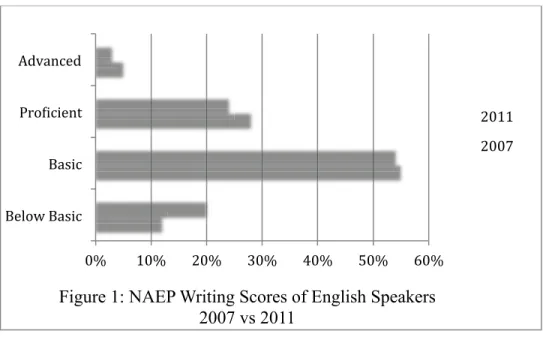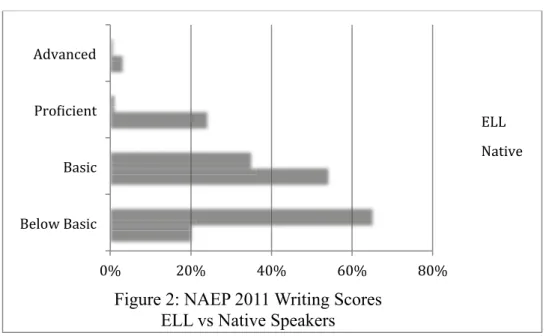In the United States, and Mississippi in particular, the number of K-12 English language learners is growing rapidly. Sfard and Prusak (2005) define identity as "a set of tangible, meaningful, approved stories about a person." The authors demonstrate that rather than identity being expressed through history, identity is history. The number of English language learners (ELLs) in the United States continues to rise steadily.
Compared to other parts of the country, Mississippi does not have a high percentage of ELLs. During the 2015-2016 school year, the school district where the study was conducted had 8 ELL students. According to the School District English Language Learner Program Plan, “the home language survey will be given in a language that parents can understand, to the extent practical, or in an understandable and uniform English form.” Once the home language survey is completed and a language other than English is indicated as the primary language, students will be given the state-approved English proficiency screener.
While the school district follows this process, there are possible gaps in the enrollment system, especially with the home language survey. Therefore, the validity of the home language survey and the initial identification of students as ELLs cannot be relied upon. As stated in the district's plan, "the sheltered English language teaching approach manages English vocabulary and language structure so that the student can understand classroom content area skills and concepts while developing his/her English proficiency" (School, 2016).
Adolescent ELLs face numerous obstacles as they develop English proficiency and adjust to middle school in the United States.

Methods Overview and Hypothesis
Because of the complexity of ELL writing, qualitative and quantitative data collection allowed for a deeper understanding of the linguistic and cultural background as well as the writing skills of ELLs. The study was conducted with two Spanish-speaking ELLs in 7th grade at a middle school in Mississippi. The researcher recruited students to participate in the study by talking to fourteen high school Spanish-speaking ELLs and providing each one with a.
While the original intention was to have as many of these students as possible participate in the study, only two were selected to participate. There were several reasons for the limited number of participants, including the researcher not being able to speak directly with the parents, and the writing samples collected for the study not being part of the students' required coursework. Student A participated in the research when he was enrolled in the 7th grade and was twelve years old at the time of the research.
Student A completed grades from kindergarten to 5th grade in Mexico and entered school in the United States in 6th grade. Student B participated in the study while in 7th grade and was twelve years old at the time of the study. The questionnaire was given to participants in both English and Spanish, and participants completed the questionnaire in the language of their choice.
In the second week of the study, participants completed a narrative writing task in both English and Spanish. Over the following weeks, participants completed two more writing assignments in the language of their choice. During the final week of the study, participants conducted an interview with the principal investigator in the language of their choice.
All information from the study remained confidential and was used only by the principal investigator and her advisor. The purpose of the interviews was to further explore the qualitative research component on how writing about personal experiences reflected middle school ELLs as bilingual writers. The interviews also allowed the researcher to explore the participants' attitudes and feelings towards their language learning experiences and bilingualism in general.
Results Qualitative Analysis
Participant A reported in the interview that he does consider himself bilingual and feels proud to be able to speak both English and Spanish. Participant B was born in Los Angeles, California and has lived in the United States all her life. Although Participant B had lived in the United States all her life, she said that she was nervous about it.
In the interview, Participant B reported that she only speaks Spanish with her family, but only speaks English with her friends outside of school. My latest is to buy really good supplies for my dogs because my dogs suffer outside in the cold and I don't like that. Overall, the goal of the quantitative analysis was to find and address patterns in the participants' writing samples, making connections to their identities as ELL writers whenever possible.
In the first writing task, Participant A responded to the prompt “A person I admire” in English as instructed by the researcher. For the second writing task, Participant A chose to write about his hobbies and interests in English. The participant wrote a total of three sentences and eighty-seven words in the allotted time.
For the third and final writing assignment, participant A chose to write about his wishes in English. The word 'study' was misspelled as 'study'. There were also two run-on sentences in the writing sample. For the second writing task, Participant B chose to write about her hobbies and interest in English.
My last is to buy really good supplies for my dogs because my dogs are suffering outside in the cold and I don't like that. She was able to write a considerable amount of words in English in the allotted time without a lot of code-switching or grammatical errors. While spending time in the ELL class conducting the study, the researcher noticed that students were asked to refrain from speaking Spanish in class.
Although the participants in this study produced writing samples with only a few errors, the results of this study suggest that if students wrote poorly in one language, they would do so in the other language as well. Participant B only attended school in the United States where she learned English, but only speaks Spanish at home.
Summary and Implications
Language history/use
Attitudes, beliefs, and feelings about language and literacy
